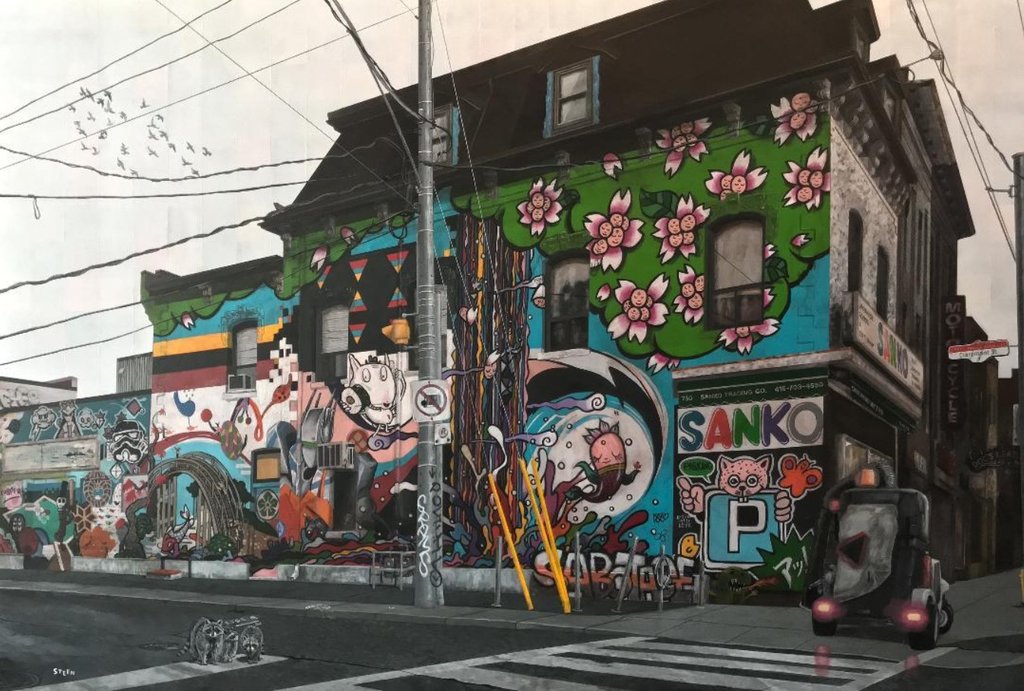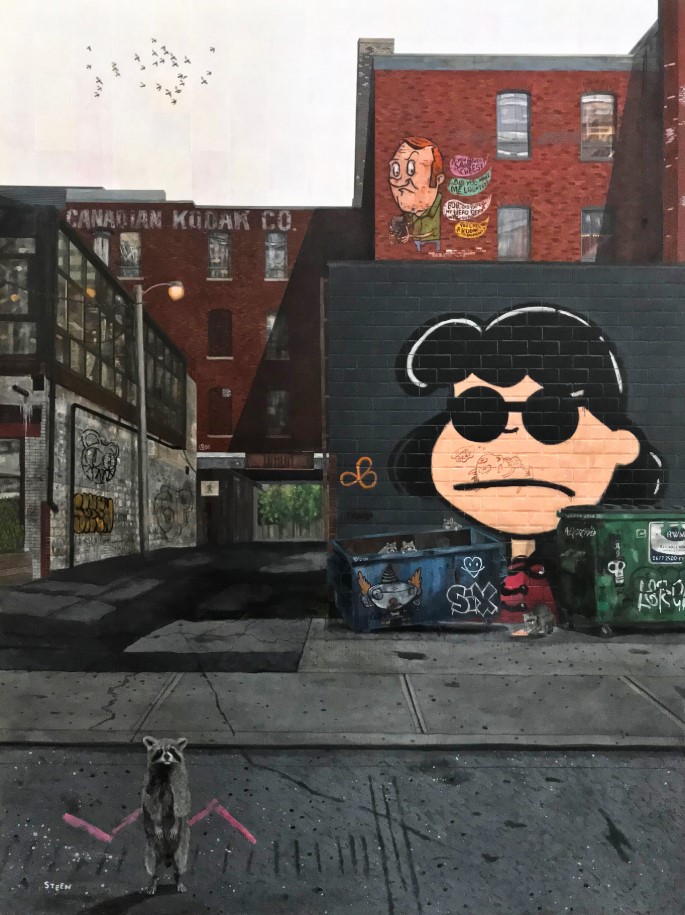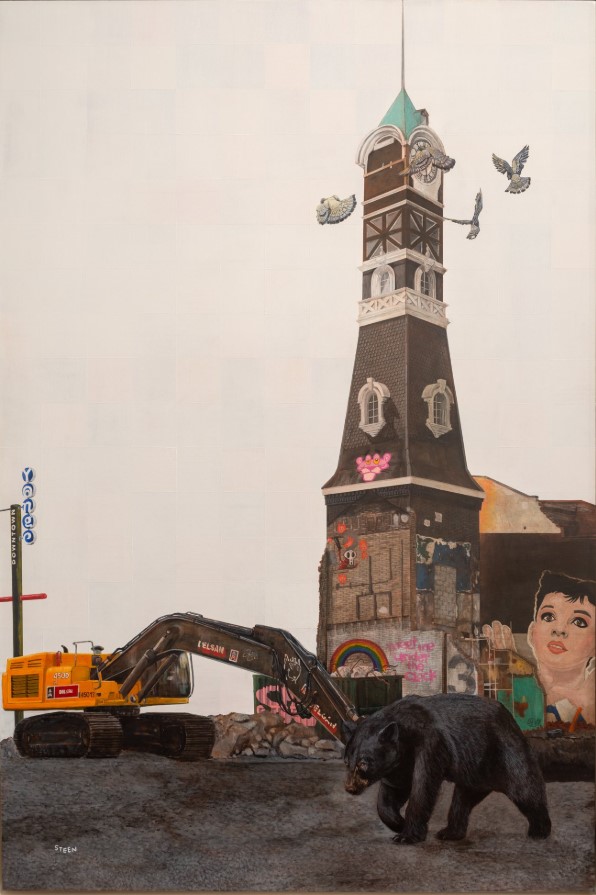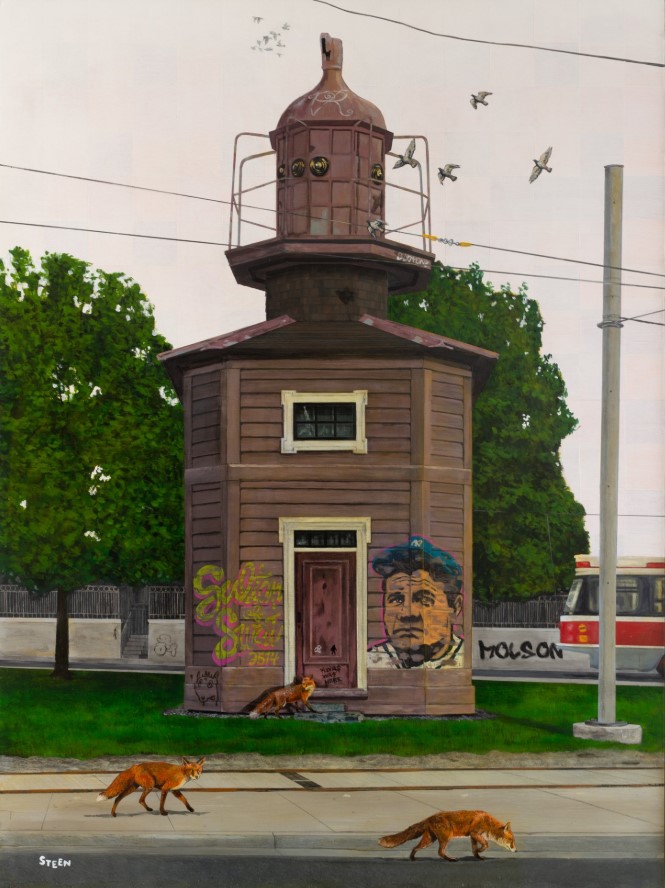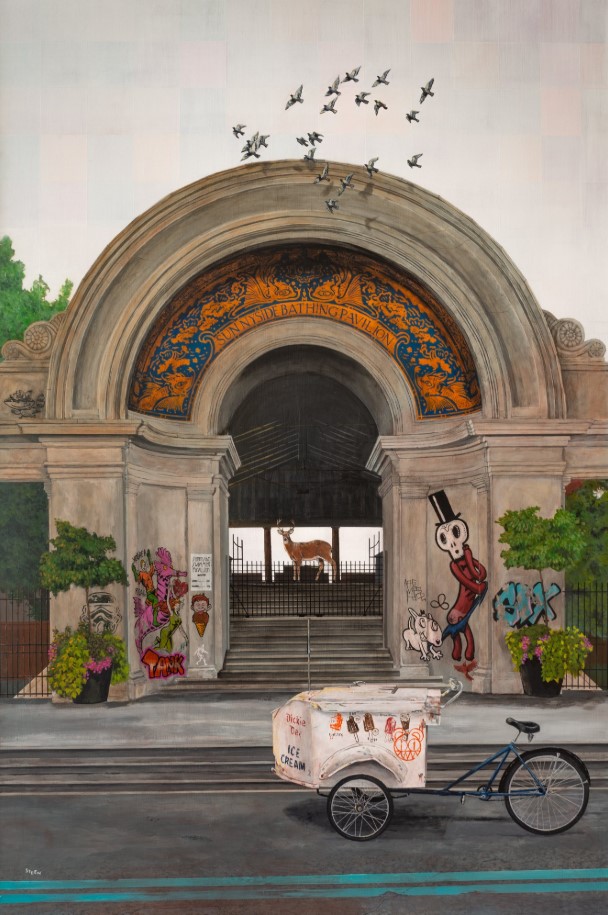Interview with Brandon Steen (BS) by Mikael Sandblom (MS)
Brandon Steen was interviewed on the occasion of his solo show, Waking Up, at Elaine Fleck Gallery
MS: I see that your current body of work has been very consistent since late 2016 but it is quite different from what you were doing before. Was there a particular painting that was a breakthrough for you?
BS: Great question. There is such a painting titled Milk Truck and it isn’t one of mine, it was painted in 1959 by the late great Alex Colville. I have long admired Colville’s art going back to my first introduction to him in my high school art classes and came upon the painting on a visit to the McMichael Gallery in 2015. It resonated so deep within me on that visit that as I walked through the remainder of the gallery and out to my car it was all I could think of. I had to scratch that itch in me, turn a page on my pop surrealism art and paint realism. Soon after that day I had the great fortune of meeting gallerist and gallery owner Elaine Fleck for the first time by chance and I happily haven’t looked back.
MS: You take a great deal of care in painting the architecture of these old buildings. You paint every single brick! The fine detail makes me pay more attention to what otherwise blends into the background of urban life. Could you tell me your thoughts on the buildings you select to paint?
BS: Thanks for noticing and I am grateful my art has made you more aware of the architecture around the city. Sir Winston Churchill said once “We shape our buildings and afterwards our buildings shape us.” I for one feel quite strongly that our city has a rich and storied architectural lineage, shaped by its buildings that must be preserved. I am documenting them as I create my paintings before they are torn down or facaded without their souls intact. Perhaps I will become in time historical artist of Toronto’s past.
MS: What is your painting process? Do you make sketches first? Do you work from photographs?
BS: My process begins with me sleuthing the cities architecture on the internet, I take notes and screen shot buildings for future reference. Once I decide on a structure I go on location to see if there is a composition to paint. If I am inspired I will arrange to photograph the building usually at sunrise as the streets are clear of pedestrians and vehicles that otherwise would block my view. I return to my studio, download my shoot, select a photo to construct my composition digitally as I work strictly from my photos. From that composition I will transfer it to either a birch or maple panel that is sanded twice and crack on with buttering the paint around into a finished painting.
MS: The way you paint the sky is very interesting. Could you tell me about your method for this?
BS: Sure, yes, I get asked about my sky treatment a lot. I want all the focus to be on the structure, stripping out the background focuses the patron onto the building so that is why my paintings have white skies. Except a pure white background is flat and uninteresting to me. I have developed a technique that involves layers of painting under the painting to give texture and depth. I then measure out a grid and paint what I call individual tiles various colours that I hand mix up and then when they are painted I treat the sky with a series of white washes. I paint over the tiles and allow some colour to peak through to give a unique and dynamic layer to my paintings.
MS: Your paintings are devoid of people, but they always contain birds and animals. How do you think these creatures change the meaning of the paintings?
BS: There are no people in my paintings on purpose, as I want the focus on the strictly on the structure. The birds are there because they represent calmness and I have heard they do to others as well from the patrons’ comments they have shared with me be it in the Elaine Fleck Gallery, online or in person. As for the animals they are in my art because I care about animal conservation, the habitat we influence on them especially here in the city. A noted conservationist, Torontonian named E.T. Seaton asserted “we and the beasts are kin” to which I concur. Perhaps my hope is that when people see the animals they will see them as a conduit of sorts to their own desire to champion an awareness to the animals’ equal right to our city.
MS: I see that graffiti is an important component of your paintings. But when I compare your work to the actual sites, I see that you’ve also added your own! Could you tell me about the graffiti that you add?
BS: Graffiti is here to stay and ubiquitous with downtown architecture it would seem. In some instances, it is there on a particular building or structure and in some cases, it is terrible graffiti, so I create my own. The graffiti I create has meaning because it tells a unique tidbit of the building’s history and in some instances, I might work in the music playing in my studio or iconography that is personal to me. Such as two characters that hit up my art which are a carryover from my career as a pop surrealist, Happy the bull terrier and Abe Weiner.
MS: What’s next for you? Are you planning to continue this series, or will we see a change in your next paintings?
BS: Oh, that’s a great question. What’s next is a road show of sorts that my gallerist Elaine Fleck is taking me on. She and the gallery will be showcasing my art in a fall show in September at the Evergreen Brick Works. That show is going to be amazing and I have been tirelessly preparing for and I will be so proud to share it with the public. At this point I will say that show will be about five Toronto Saints and lots and lots and lots of painted bricks.
Mikael Sandblom
Images are courtesy of Elaine Fleck Gallery
*Exhibition information: Brandon Steen, Waking Up, Solo Exhibition, April 2019, Elaine Fleck Gallery, 1351 Queen St. West, Toronto. Gallery hours: Wed – Sun, 12 – 5 pm (closed on Easter Sunday)


